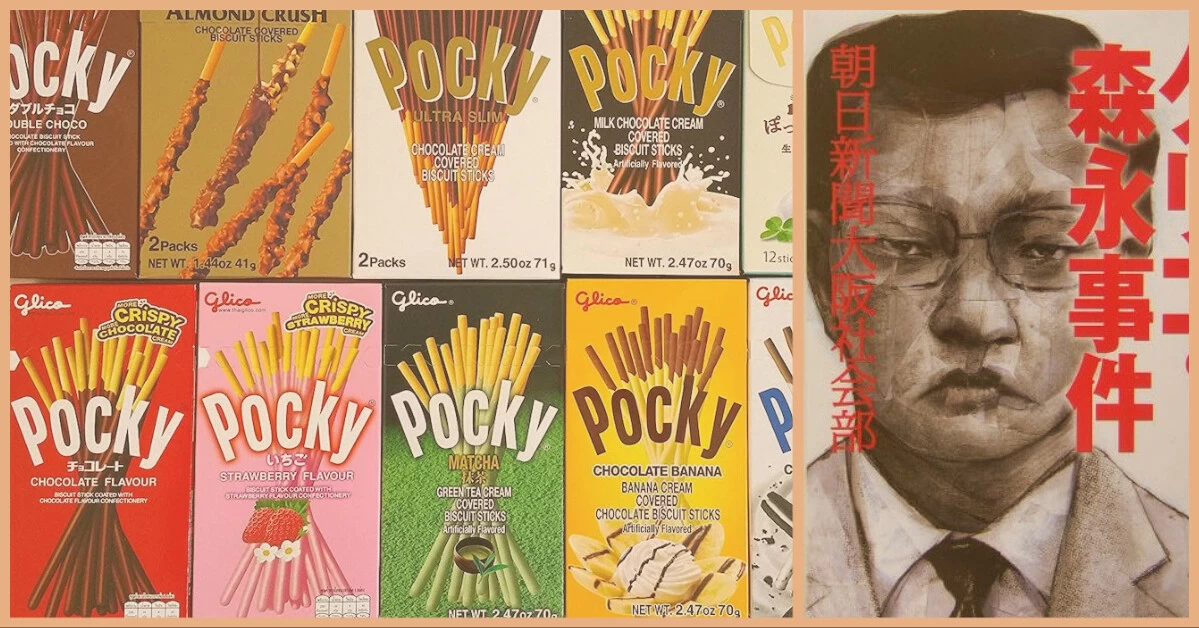The Glico-Morinaga case, commonly known as The Monster with 21 Faces, was a criminal gang that terrorized Japan in the 1980s. The heinous crime can be considered one of Japan’s most infamous kidnappings in history. The first kidnapping occurs on March 18th, 1984, where the story begins. Masked men with firearms forced Katushisa Ezaki, the CEO of the
Japanese candy firm, Ezaki Glico, out of his bathtub naked during an evening bath. A ransom note was found the day after the kidnapping, indicating that Ezaki’s company had to pay 1 billion yen, about 11 million dollars, and 220 pounds of gold, making it the greatest ransom ever ordered in Japan. Only 27 kidnappings were reported in Japan the previous year, thus such a large-scale crime was unthinkable. Nonetheless, Ezaki managed to flee two days later before any ransom money could be handed up. Despite the fact that the kidnapping of Ezaki had failed, the monster with 21 faces was not about to give up simply. It was revealed that the gang’s mission was to take down the giant food manufacturers that sourced japan.The perpetrators then demanded $480,000 in ransom by threatening to poison Glico’s confectionery with cyanide. In response to the threat, the gang allegedly broke into Glico’s company and set fire to it. Following the broadcast of the risk, the Japanese population panicked and ordered a nationwide recall of Glico’s products.This recall cost millions of dollars and led Glico’s revenues to drop, resulting in a significant number of layoffs. However, it was discovered that none of the products were legitimately laced with cyanide, and the millions of dollars spent on the recall were wasted.
The police were left looking like fools and were unable to find the culprits behind the candy criminals. A case as big and difficult as this one was rare in Japan, where the police were much more efficient than others. As the case went on, so did the mockery against the authorities. On April 8th, the press received the first letter out of over 100 letters sent by the criminals. The letters taunted the police, disclosed hints and even helped them do their job. It seemed like the people who wanted these criminals to be found out the most were the criminals themselves. The letters contained multiple clues such as what typewriter they were using, what colour car they used and naming the stores where they bought their food. Although most of these “clues” seemed useless it just made the police look more incompetent for not being able to recieve any helpful information on there own. By June, the criminals had begun to refer to themselves as The Monster with 21 Faces based on the 1936 children’s story “The Mystery Man with the Twenty Faces” by Edogawa Rampo.
In September 1984, the group had targeted another candy corporation known as Morinaga. The company had begun receiving ransom letters threatening them if they did not send over $410,000. However, Morinaga never sent the payment and disregarded the threats. Later in October, news broke that cyanide poisoning had surfaced through into Morinaga’s products, and this time it was true. Although each package had been labelled “Danger, Cyanide!” The gang promised that next time there would be no label. Overall, 18 packages had been removed from stores and were tested positive for cyanide.
After this incident investigators found surveillance footage showing a suspect placing something on the shelf of a grocery store, which was later to be seen as the poisoned candy. However, officers could not correctly identify the suspect because of the poor camera quality
and bad lighting. Moreover, officers had also found phone calls attempting to obtain the money reportedly placed by The Monster with 21 Faces. Shockingly the voices on the tape weren’t
those of husky gangsters but instead of a woman and a child. The child was heard giving instructions on where to leave the money. Although no arrests were made, this did provoke Japan to reconsider who exactly The Monster with 21 Faces could be.
As time went on, so did the chaos The Monster with 21 Faces created. More letters kept coming, and the group had harassed 31 other food and candy corporations. Each time the group consistently demanded money but never actually collected it. The group had most likely always assumed that police would be waiting for them to collect the money, and each time, they were correct. The group always seemed to have the lead, and the authority could never catch up to them. It felt like the gang was playing games with the police and food companies, which only they could ever win at.
Finally, on August 12th, 1985, they sent their last letter stating that they were done committing these crimes and harassing companies. In the letter, they said, “We are bad guys. That means we’ve got more to do other than bullying companies.” The police had spent thousands on officers for this case and had received thousands of tips, but to this day, The Monster with 21 Faces remains unknown and free. While many theories surround who this group could be and their true motives, nobody will truly know the mind behind this group. Although this case remains unsolved, the last thing we are left with from the group is their last words, “It’s fun to lead a bad man’s life.”
Bibliography
Cayetano, Ferdison. “Japan’s most notorious kidnapping is still unsolved.” Crime reads, 14 April 2021, https://crimereads.com/japans-most-notorious-kidnapping-is-still-unsolved/#. Accessed 20 August 2021.
Tixier, Jody. “The Menacing Case of the Monster with 21 faces.” Youtube, uploaded by Buzzfeed Unsolved Network, 2 July 2021,
https://www.youtube.com/watch?v=mqxHzWJlqps. Accessed 22 August 2021.



